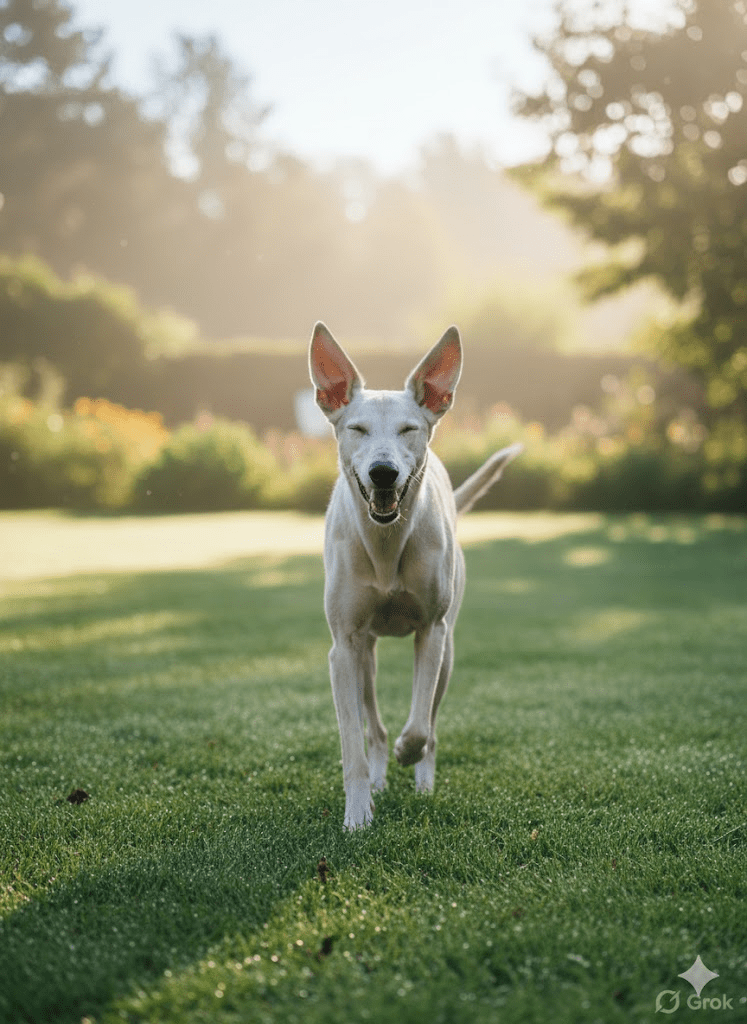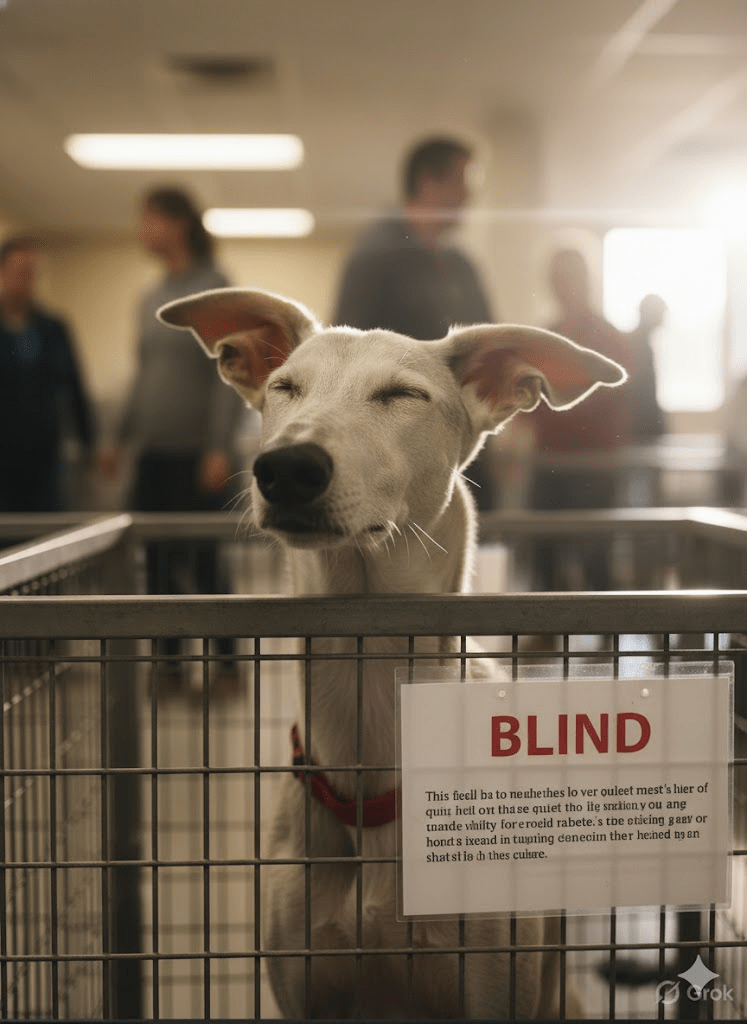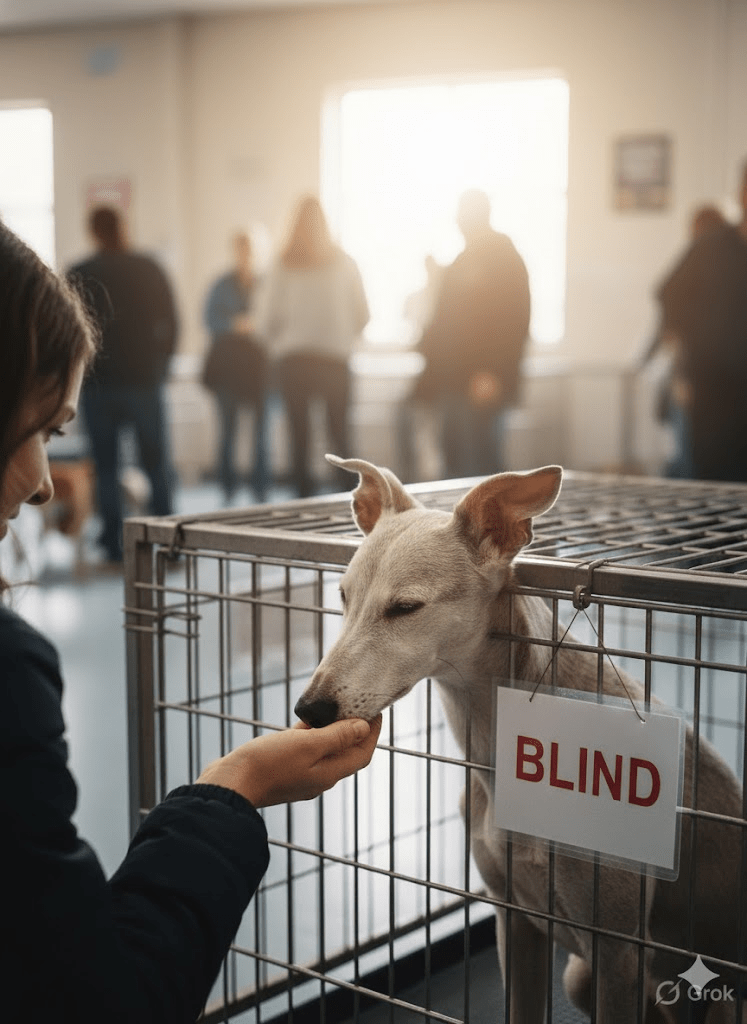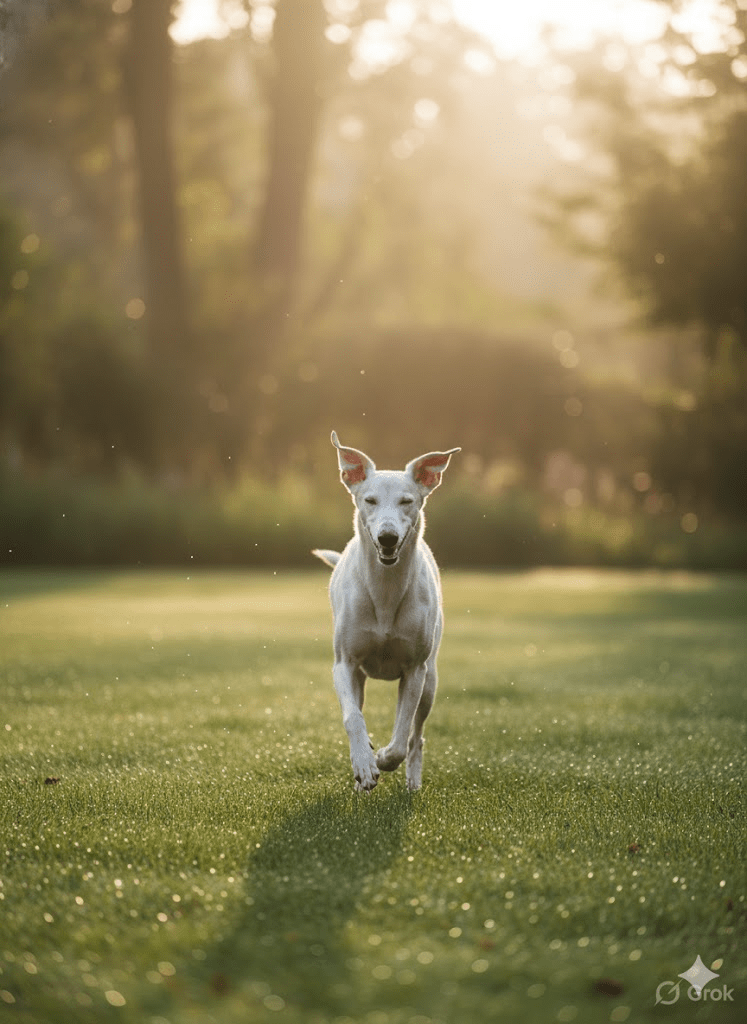The call came on a Tuesday, an innocuous chime on my phone that would irrevocably alter the landscape of my life. It was the local animal shelter, their voice tinged with a familiar weariness. “We have a unique case, Sarah. A greyhound mix, rescued from a hoarding situation. Completely blind, and… well, she’s been here for months. No one even seems to see her.” That last sentence, delivered with a sigh, struck a chord deep within me.

Having spent years volunteering, I knew the silent tragedies of the shelter—the overlooked, the “imperfect,” the ones who faded into the background despite their profound need. My chest ached with that familiar pull, an empathy that often felt less like a choice and more like an unavoidable current. I agreed to visit, not with a plan, but with a quiet conviction that some connections defy logic.

Entering the shelter, the cacophony of barks and meows was as expected, but what wasn’t was the profound stillness that drew me to her cage. There she sat, a small, white shadow, her enormous ears twitching, perpetually listening. A crudely written sign, “BLIND,” hung on her kennel, a stark label that seemed to amplify her invisibility. She wasn’t begging for attention; she wasn’t even looking in my direction, for she couldn’t. Instead, her head lifted slightly, an almost imperceptible movement, whenever footsteps paused near her section. A quiet snuffle reached me, her delicate way of testing the air. I knelt, not speaking, simply extending my hand. She found it instantly, pressing her small, bony head into my fingers with a sigh so deep it felt ancient. In that moment, a surprising twist of realization struck me: my own fears—of not being enough, of failing her—were dwarfed by the sheer, unyielding trust she offered without hesitation.

Bringing her home was a leap of faith. The initial days were a delicate dance of discovery, a poignant mapping of a world she could only perceive through sound, scent, and touch. I had to become her eyes, her compass, her constant guide. The furniture, once mere objects, transformed into an intricate obstacle course that I painstakingly outlined for her with my voice. “Two steps, pause. Three steps, treat.” My voice became her handrail, a melodic cadence that reassured and directed. She bumped into things, of course, stumbling and then stopping, ears perked, listening, gathering herself. Each time, I waited, holding my breath until her courage, a quiet melody, rose again, and she’d tentatively continue. It was a slow, arduous process, yet unexpectedly rewarding.

One of the most unexpected twists came on a rainy afternoon. We were in the garden, a space I thought she navigated purely by the scent of damp earth and blooming roses. Suddenly, she broke into a trot, not fast, but undeniably free, her ears flapping, her nose to the ground. She veered slightly, correcting herself with astonishing precision, weaving between the rain-soaked shrubs. My throat tightened; it was less a run and more a testament to pure, unadulterated joy. She couldn’t see the vibrant greens or the shimmering raindrops, yet she was experiencing the world with a profound richness that surpassed mere vision. It was then I realized that my task wasn’t to fix her, but to simply provide the space for her to be entirely herself.







